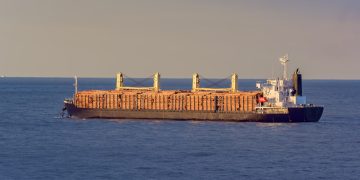The Norwegian NOx Fund offers the UK and the International Maritime Organization a model that could be adapted to deliver GHG emission reductions in shipping. Since the 2008 creation of the NOx Fund, Norwegian nitrogen oxide (NOx) emissions have decreased by 44,000 tonnes.
Specifically, up to now the Fund has paid out over NOK 4 billion (US $467 million) in support of NOx reductions, with Norwegian companies leading the world in this field.
The Fund has, reportedly, received over 1,000 applications from business members requesting support for NOx reduction measures and technologies.
Therefore, the Nox Fund supports that the UK should consider implementing to tackle greenhouse gas emissions from UK shipping as part of its Maritime 2050 strategy.
In the meantime, the Fund urges the IMO to consider creating a similar fund to support research, development and deployment of zero carbon technologies across the world fleet.
The Norwegian Nox Fund was created when Norway imposed a NOx tax in 2008. Then, businesses had the option of not paying the tax if they committed to reduce NOx emissions by a certain amount.
Thus, Norwegian businesses founded the NOx Fund – allowing the businesses to pay into the fund at a lower rate than the tax, but with the collected money used for NOx emission reduction measures. If the businesses do not reach the agreed reductions, then the tax would be re-imposed. To date, the emissions reduction measures have been successful at reaching their target.
The concept of paying a smaller fee to the Fund in place of the larger NOx tax is attractive to businesses from various industries.
Continuing, the Fund supports that as the UK seeks on decreasing GHG emissions, the NOx Fund could be a model to consider.
It allows money to be recycled into emissions reduction technologies within the industry by providing a pot of money to be used to purchase green technologies that would not have otherwise been bought. The UK could easily impose a low fee on vessels in UK waters, for journeys to the UK and/or UK flagged vessels that would create a pot of money to fund low carbon technologies for shipping.
In addition, it is an interesting model for the International Maritime Organisation, as it illustrates how a small price on emissions can stay within the sector and drive emissions reductions that would otherwise not happen.
In order to join to the Fund, all businesses must develop a long-term plan for reducing their NOx emissions that identifies all possible.
Moving on, as the UK recently published the Clean Maritime Council in order to consider policies to make UK shipping sustainable, it should think of introducing concrete polices that will work to de-risk investment in shipping greenhouse gas emissions reduction technology, as the NOx Fund has done in Norway for NOx emissions.
The Nox Fund addresses that it is an interesting project for the UK to think of, as it is looking for ways to cut GHG emissions from its shipping sector.
Concluding, the model allows businesses to recycle money within their industry while also incentivizing emissions reductions beyond those driven simply by a flat tax on emissions, by creating an investment pot.
If a price is placed on carbon emissions from international shipping, the revenue generated can be recycled into investments into research, development and deployment of zerocarbon fuels and ships, in order to drive the quickest possible route to decarbonisation. The technologies exist to decarbonise the shipping industry. All that is needed is a sensible policy to enable the investments to happen. The NOx Fund provides a good working example of just such a policy.

































































